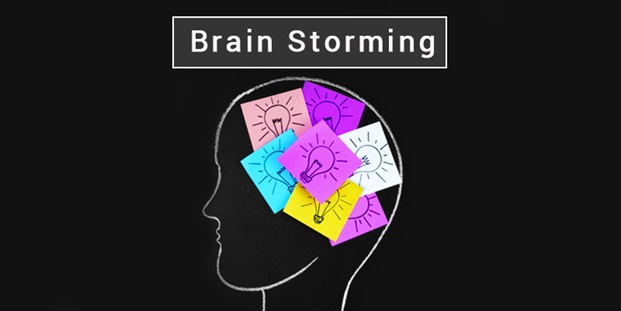To water your brain and grow your ideas you don’t need a jug of water poured on to your head but instead a rigorous brainstorming session which lets the rain of ideas paved its path through. Brainstorming is a freewheeling discussion setup which allows students to think critically about concepts and ideas, form collaboration, and disseminate ideas freely with other students. Brainstorming is a valuable means which allows the students to express themselves “freely” as every answer is exempt from being labeled as wrong. The activities which are part of the session comprise of free writing, mind mapping, pro congeries, and listing etc.
Brainstorming is a means of promoting creativity and spontaneity that is highly stimulating and encouraging for students. It allows students to think out-of-the-box as they bounce their ideas off one another in a sounding board procedure. Furthermore, brainstorming sessions encourage creative leaps that may lead to concrete ideas. These are the session which occurrence in the classroom provides them with the thesaurus of ideas embodied in their assignments and perhaps selling those ideas in a package of Cheapest Essay online.

In this article, we will spotlight some benefits of brainstorming in a classroom.
1. It Allows Creative Thinking
Brainstorming can be viable teaching strategy for students to spawn a solution from generating ideas on a particular topic. During brainstorming, when pupils are asked to “think of all the things” pertaining to a topic, they are actually asked to “stretch their thinking skills”. By sitting along with other mates, the student is inclined to think imaginatively and critically so as to come up with ideas that make him/her noticed. Normally, a student might respond to a query saying “I don’t know” but with the technique of brainstorming, the students express whatever comes to mind relating to the topic. Let’s suppose that the brainstorm topic is “School”, the pupils would say every possible thing that comes to his or her mind, such as words like building, blackboard, books, chairs, desk, teacher, principal, etcetera.
2. It Encourages Everyone’s Viewpoints
A brainstorming session makes students autonomous in putting forward their ideas. No matter how obnoxious they may feel, the teacher accepts and respects individual differences, so that there is a chance to every single member as well as minorities this makes each individual feeling free to express him or herself. Contributions are accepted without criticism and/or judgments and demonstrated to students that their knowledge and their abilities are valued and accepted. Every single member gets sort of jubilation to have contributed to the final solution.
3. It Involves Everybody
Some students are often reluctant and avoid participating voluntarily in the class activities. A brainstorming session is one of the excellent and useful strategies which promotes participation, genuine collaboration and interactive engagement in the classroom. Being an open-sharing activity, it encourages pupils to participate, interact, and take an active role in the learning process. Brainstorming can initiate a healthy discussion and can actually go about stimulating the build-out of new solutions and concepts. The final ideas are identified through the mutual consensus of the participants.
4. Its Swift and Easy:
Brainstorming is not difficult to comprehend; rather it’s a quick and easy class activity. It would simply start with a statement of a problem or a word and students would only be required to provide and map-out their ideas as a solution. In addition, there are merely few basic rules to follow for participants to learn and to perform. Moreover, the participants do not necessarily have to be dexterous to participate in the session. Brainstorming, without any doubt, embodies in a stirring learning environment wherein students are able to collaborate in a relaxed informal learning atmosphere.
5. It Sets a Learning Baseline:
Before the start of a unit of study, carrying out a brainstorming session can be helpful for both the students and the tutor. It allows them to have a glimpse of “how much” the students know about the particular topic. After the completion of the session, students can re-visit the brainstorming tools and access their recorded ideas; this can either add or include new ideas to their understanding or correct their misconceptions. This facilitates them to evaluate what they know and get them to look into the progress that has taken place in their learning.
So give a push to your brain neurons for acing those class grades and propelling your online cheapest essay by engaging in these sessions where amazing things are destined to happen.

















out of the teaching techniques brainstormin seems to be the best